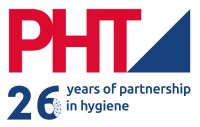Hygiene concept in food production. Here’s how it works
Every food manufacturer needs a hygiene concept. This is because every food business is subject to EU hygiene law. In a sentence, this means that food manufacturers must ensure that the food they place on the market is safe. This applies to all stages of production, processing, and distribution, including primary production.
Responsibility of the food business operator
Manufacturers are responsible for ensuring food hygiene and safety. This is regulated by the relevant EU directives and laws. Manufacturers must fulfill this responsibility by conducting internal checks in accordance with the principles of the HACCP concept (Hazard Analysis and Critical Control Points). This is where the hygiene concept comes in.
With a rigorous hygiene concept, food manufacturers identify risks within their companies and obtain a clear structure for avoiding them.
Hygiene concept. Step by step
But how do you create such a hygiene concept? What are the most important steps on the path to complete hygiene? Because there is no doubt that a systematic approach is necessary for a good hygiene concept.
Step 1: Analyze operations
Only those who know their business can implement the right hygiene measures. Therefore, analyze all production processes, premises, equipment, and supplier products. Also consider storage, transport, and staff movements. This is time-consuming, but essential.
Step 2: Assess the risks
You are familiar with every production process, every piece of equipment, all your raw and finished products, and your suppliers. You have checked storage and transport. Then you identify potential hazards for food contamination. These include inadequately cleaned hands and shoes, pest infestation, contamination, incorrect and excessively warm storage, dirty surfaces, or poorly cleaned equipment and premises.
As part of an HACCP plan, you then define the critical control points in your hygiene concept. These are areas where risks arise and which must be controlled by measures such as access to the production facility, social rooms, storage rooms, or equipment.
Step 3: Establish hygiene standards
Within a hygiene concept, we roughly differentiate between two areas: personal hygiene and operational hygiene. Personal hygiene encompasses all measures relating to the personal hygiene of your employees, such as personal hygiene at home and at work, work clothing, and behavior in the event of illness.
Operational hygiene essentially covers your premises and equipment. Detailed hygiene plans must be drawn up for both areas. These range from hand hygiene and clothing regulations to cleaning and disinfection plans for rooms, equipment, and work surfaces. The plans list the cleaning points, the frequency of cleaning, the methods, the cleaning agents used, and much more.
Step 4: Create a hygienic production environment
The right operating facilities make it easier to comply with hygiene standards. These range from facilities for staff rooms and hygiene sluices to foam cleaning systems and crate cleaners. There is a wide range of technical aids to choose from. The PHT Group will be happy to advise you in detail.
Step 5: Separate rooms
Structural measures are also important, such as the clear spatial separation of “clean” and “unclean” areas, e.g., raw and finished foodstuffs or production and the street.
Step 6: Create and implement cleaning plans
A good cleaning plan consists of a routine plan and a special cleaning plan. The routine plans specify how often work surfaces, machines, equipment, and rooms must be cleaned and disinfected. Special cleaning includes more intensive cleaning, e.g., during production downtime or after pest infestation, as well as regular intensive cleaning. The cleaning plan also includes the cleaning agents and methods used, as well as the logging of their application.
Step 7: Check the cooling chain
Heat promotes germ formation. We all know that. Therefore, make sure that all areas are kept at the optimum temperature, from storage to delivery. Check that the cooling chain is maintained without interruption.
Step 8: Introduce pest management
Pest control is prevention. The hygiene concept therefore includes measures such as fly screens, waste prevention, and the use of traps to prevent infestation from the outset. Regular checks are also necessary.
Step 9: Define corrective measures
Operating resources, room separation, cooling chain, and pest management are all critical control points in the HACCP concept. If deficiencies or risks are identified in advance, it is time to initiate corrective measures. For example, if certain temperatures are exceeded or there are deficiencies in staff hygiene.
Step 10: Train staff
The best technology and hygiene concept are useless if the technology is not operated correctly and the hygiene concept is not adhered to. Develop training programs for all staff that are carried out and updated regularly. Topics should include personal hygiene, operational hygiene, cleaning protocols, and temperature control.
Step 11: Document
Documentation is tedious, but essential. It is also required under the HACCP concept. Keep training records to ensure that every employee is familiar with and complies with the necessary hygiene standards. And record all measures such as cleaning and disinfection plans and technical aids. In addition, create a system for tracing raw materials back to the finished product so that you can respond to any problems.
Continuous monitoring and documentation are integral parts of the HACCP concept and thus of your hygiene concept.
Develop a hygiene concept with us
Do you need advice on individual hygiene measures or your hygiene concept? As hygiene specialists, we are happy to advise you.

Contact us to learn more about our hygiene solutions for food production.



